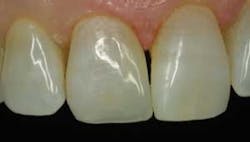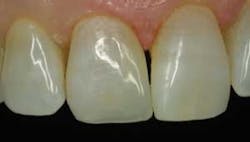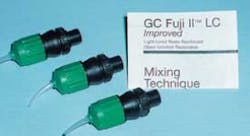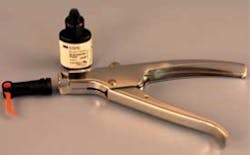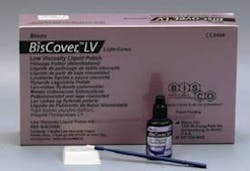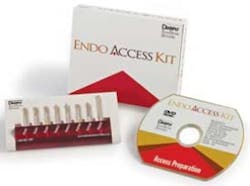Ask Dr. Christensen
Gordon J. Christensen, DDS, MSD, PhD
In this monthly feature, Dr. Gordon Christensen addresses the most frequently asked questions from Dental Economics® readers. If you would like to submit a question to Dr. Christensen, please send an e-mail to [email protected].
For more on this topic, go to www.dentaleconomics.com and search using the following key words: dental caries in elderly patients, resin-modified glass ionomer, amalgam, carious lesions, restorative materials, Dr. Gordon Christensen.
Q I see many elderly patients with ongoing active dental caries. There has been a significant amount of information disseminated in journals on the use of preventive restorative materials. I have been using amalgam for these people. However, I am still confused. I have used some of the recommended preventive restorative materials and I have not been pleased with their working characteristics. Which materials do you suggest for mature patients who have obviously active caries, and most of whom are not practicing adequate oral hygiene?A Your question has never been more important than now. The aging of the U.S. population is evident. Many of these patients are physically or mentally compromised. Additionally, the diet of many mature people is highly cariogenic. The majority of the carious lesions we are seeing in these people are in extremely difficult locations for restoration, including deeply carious interproximal areas, and class V areas on previously placed crowns (Fig. 1) or around previously placed amalgams or composites.In the past, amalgam was the primary restorative material for these difficult locations, but the use of amalgam has decreased because of esthetic reasons and because some patients reject this material on the premise of alleged health challenges.
What are the most appropriate restorative materials for mature carious lesions in 2010?
Resin-modified glass ionomer
Over the past several years, conventional glass ionomer restorative materials have been modified significantly to provide excellent restorative capability, preventive characteristics, and relative ease of use. As you will remember, these materials are mainly glass ionomer (80%) incorporated with resin (20%). The resultant materials provide the cariostatic characteristic of glass ionomer and some of the strength of resin-based composite. I regret that many dentists have not perfected the use of these materials or have not discovered their desirable characteristics. I find them to be the materials of choice for mature patients with ongoing carious problems.
Two of the most popular resin-modified glass ionomer materials are:
- Fuji II LC from GC America (Fig. 2)
- Ketac Nano from 3M ESPE (Fig. 3)
The resin-modified glass ionomer restorative materials named above have not been without clinical placement problems. Their working characteristics could be better. Negative characteristics and solutions to these challenges follow:
DISPENSING AND MIXING: Initially, these materials were marketed in a powder/liquid form. Mixing the materials often produced less-than-optimum mixes, either too thick or too thin. Subsequently, the companies placed the materials into various dispensing systems that have produced the potential for more homogeneous and proper mixes.
INITIAL VISCOSITY OF THE MIXED INGREDIENTS: When initially mixed, the resultant viscosity of the material is sticky and lacking putty consistency. Such mixes are difficult to place into tooth preparations because the placement instrument pulls the material out of the tooth preparation. This negative working characteristic has discouraged many dentists from using the materials. However, the problem can be overcome by waiting up to 45 seconds after mixing before placing the restorative material in the tooth preparation. By observing this short delay, the material changes from a sticky, difficult-to-place viscosity to putty that is relatively easy to place.
SOFT INITIAL SURFACE AFTER CURING: After curing with a light, the material still has a relatively soft surface when compared to a resin-based composite. The materials require many hours to achieve their full strength. Because of the initial soft surface, over finishing is often a problem, unless the following precautions are observed. After initial placement and curing, let the material rest undisturbed for a few minutes. In a busy office, the time required for a hygiene check or two is about enough time for the materials to develop more strength, allowing easier finishing. I also suggest use of nonaggressive finishing and polishing instruments, such as previously used, sterilized #7901 pointed tapered burs, or fine or extra-fine finishing disks. If sharp, new burs are used, you will be more likely to over finish the restorations. If aggressive disks are used, you will over finish the restorations.
SURFACE ROUGHNESS AFTER TIME IN SERVICE: Some of the early materials developed slight roughness on their surface after a few months of service. This has been largely overcome, especially by the 3M ESPE product KetacNano, that now has about 40% nanofillers, all of which are below 100 nanometers in diameter. The addition of nanofillers has produced a significantly smoother surface than in the past. The following suggestion assists in retaining the smooth surface. After finishing the restoration, dry the surface with a light air blast and place a surface sealer on the surface of the restoration and the surrounding tooth structure. Example products are BisCover LV from Bisco (Fig. 4), or G-Coat Plus from GC America (Fig. 5). These materials protect the restoration surface as the glass ionomer portion matures over many hours.
Conventional glass ionomer restorative materials
These materials have been very popular among dentists in some countries. However, they have been used less in the U.S., where dentists have preferred resin-based composite restorations. Although numerous brands of conventional glass ionomer are marketed, the most popular material in this category is Fuji IX GP Extra from GC America (Fig. 6). If you have used the material and found it difficult, it has been changed for the better. This material has been consistently upgraded since its introduction and now includes easier handling, faster setting time, and higher strength.
Some dentists prefer resin-modified glass ionomers, while others prefer conventional glass ionomers. Both materials release a significant amount of fluoride ion during service. Resin-modified glass ionomers have a dual-cure setting chemistry, while conventional glass ionomers have a chemical set. You will find that the surface of the conventional glass ionomers becomes slightly rougher during service than resin-modified glass ionomers. However, in elderly patients with high caries involvement, this slight roughness is not a significant negative point when compared to the benefits of the fluoride release.
In developing countries, conventional glass ionomers are being used with great success in a technique called ART (atraumatic restorative treatment), in which carious lesions are removed primarily by hand instruments, and conventional glass ionomer and a sealant are placed simply and easily.
Fig. 6 – Fuji IX GP Extra from GC America, a conventional glass ionomer restorative material
I suggest that you try both types of preventive restorative materials and make up your own mind as to which best fits your patients.
Tooth preparations for preventive restorative materials
There are no prescribed tooth preparations for these materials since their use is often a salvage procedure, and the tooth preparations relate to the location of the carious defect and its severity.
Many lesions requiring preventive materials are large, and the restorations are intended to serve only a few years. These restorations require ingenuity and careful clinical procedures to make sure the full carious involvements of these large and peculiar shaped lesions are removed. In such cases, the following procedure is advised:
- Remove the lesion.
- Place some undercuts in the tooth preparation, although either material has some bond to tooth structure when used correctly.
- Disinfect the tooth preparation with the material of your choice. Based on Clinicians Report research, I prefer glutaraldehyde-containing solutions such as GLUMA from Heraeus, MicroPrime G from Danville Materials, G5 from Clinicians Choice, or GluSense from Centrix.
- Place and finish the restorations according to the manufacturer's recommendations. As with the resin-modified glass ionomer restorative materials, I suggest that you wait a few minutes before attempting to finish conventional glass ionomer restorations, that you use dull instruments or minimally abrasive finishing disks, and that you place surface sealing materials as described earlier in this article.
- Advise the patient to use 5,000 ppm fluoride-containing toothpaste such as Colgate Prevident, and/or make fluoride application trays and show the patient how to use them. I prefer to make these preventive procedures mandatory for patients to ensure the optimum clinical result. The best way to ensure that the fluoride toothpaste is used is to provide a tube of it as a part of the fee for the restorations, and to give the patient a prescription for future needs.
Summary of my recommendations
Preventive restorative materials are highly advisable for mature patients with ongoing caries. They are not the easiest materials to use, and they require some clinical experience for mastery. However, you will soon see the benefits to the patient. Either resin-modified glass ionomer or conventional glass ionomer materials satisfy the needs of most mature patients. You may decide to use both categories or select one for your routine use. Both work well and have been well proven.
Practical Clinical Courses offers many two-day, hands-on courses in Provo, Utah. "Enjoyable, Profitable, Fixed Prosthodontics" on Oct. 14 and 15 offers more information on preventive materials along with many other topics. Our newest DVD, V5143 "Sealants and Preventive Resin Restorations," also offers further information on this subject. Contact Practical Clinical Courses at (800) 223-6569 or visit our Web site at www.pccdental.com for more details.
References available upon request.
Dr. Christensen is a practicing prosthodontist in Provo, Utah, and dean of the Scottsdale Center for Dentistry. He is the founder and director of Practical Clinical Courses, an international continuing-education organization initiated in 1981 for dental professionals. Dr. Christensen is a cofounder (with his wife, Rella) and senior consultant of CLINICIANS REPORT (formerly Clinical Research Associates), which since 1976 has conducted research in all areas of dentistry.
Past DE Issues
